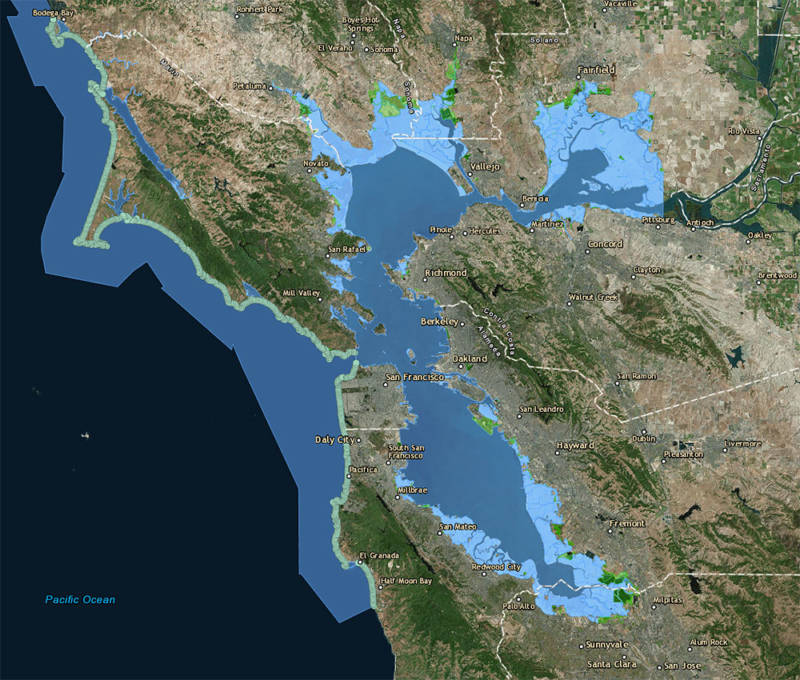Ocean Current Slowdown: Supercharging US Sea Level Rise

Table of Contents
The Role of Ocean Currents in Sea Level Rise
Thermohaline Circulation and its Impact
The Earth's oceans are far from static; they are a dynamic system driven by a complex global conveyor belt known as thermohaline circulation. This system, also referred to as the Atlantic Meridional Overturning Circulation (AMOC) in the Atlantic, is driven by differences in water temperature and salinity. Warm, less dense water flows from the tropics towards the poles, while colder, denser water sinks and flows back towards the equator. This continuous circulation plays a crucial role in distributing heat and water mass around the globe, significantly influencing regional sea levels. The North Atlantic Current, a key component of the AMOC, is particularly important for the climate of the US East Coast, moderating temperatures and impacting sea levels.
- Warm water currents transport vast amounts of heat from the tropics towards higher latitudes.
- The sinking of cold, dense water in polar regions drives the deep ocean currents, completing the circulation loop.
- This circulation pattern influences regional sea levels by redistributing water mass around the globe.
- Disruptions to this system can lead to significant regional changes in sea level.
Evidence of Ocean Current Slowdown
Scientific Studies and Observations
Recent scientific research provides compelling evidence for a slowing of major ocean currents, particularly the AMOC. Numerous studies using various methodologies have observed a decline in the strength of these currents over the past century. These studies utilize a variety of data, including:
- Satellite measurements: Satellite altimetry provides data on sea surface height, which can be used to infer changes in ocean currents.
- Temperature profiles: Measurements of ocean temperature at different depths reveal changes in water mass distribution and current strength.
- Argo floats: A global array of autonomous floats that measure temperature, salinity, and currents throughout the ocean provide valuable real-time data.
While there are challenges in accurately measuring ocean current speeds and inherent uncertainties in long-term data analysis, the convergence of multiple independent studies strongly suggests a concerning trend of AMOC slowdown.
The Connection Between Slowdown and Increased US Sea Level Rise
Mechanisms of Enhanced Sea Level Rise
The slowdown of ocean currents, particularly the AMOC and the Gulf Stream, directly contributes to higher sea levels on the US East Coast. Reduced northward heat transport alters the ocean's heat distribution, impacting the Gulf Stream's strength and trajectory. This, in turn, influences the sea level along the US East Coast.
- A weaker Gulf Stream leads to less warm water being transported northward, potentially causing cooler temperatures in the North Atlantic.
- Changes in salinity and water density, influenced by factors like melting ice and increased freshwater runoff, further disrupt the ocean's circulation, contributing to sea level rise.
- Slower currents can also lead to increased vulnerability to storm surges, as water is less effectively dispersed, resulting in more severe coastal flooding.
Future Projections and Potential Impacts
Climate Models and Predictions
Climate models project a continued slowdown of ocean currents in the coming decades, with potentially severe consequences for US sea levels. These predictions indicate a further acceleration of sea level rise along the US East Coast, exacerbating existing risks.
- Future projections suggest a significant decrease in AMOC strength, potentially leading to substantial changes in regional sea levels.
- The impact on coastal communities will include increased flooding, erosion, and damage to infrastructure.
- Ecosystems will also be severely affected, leading to habitat loss and disruption of marine life.
- The need for effective adaptation and mitigation strategies to manage the escalating risks associated with sea level acceleration is paramount.
Conclusion
In conclusion, the evidence strongly suggests a link between ocean current slowdown and the accelerating sea level rise along the US East Coast. The complex interplay of thermohaline circulation, the AMOC, and the Gulf Stream plays a critical role in shaping regional sea levels. The observed slowdown of these currents poses a significant threat to coastal communities, infrastructure, and ecosystems. We must understand this crucial connection to effectively address the challenges posed by rising sea levels. We urge further research into the dynamics of ocean currents and their interaction with climate change, and encourage support for initiatives aimed at mitigating climate change and building coastal resilience. Learning about and addressing the issue of ocean current slowdown is vital for securing a sustainable future for our coasts.

Featured Posts
-
 Confirmed Brooklyn Flea Remains At Dumbo Archway Plaza Until 2027
May 18, 2025
Confirmed Brooklyn Flea Remains At Dumbo Archway Plaza Until 2027
May 18, 2025 -
 Bowen Yang Reacts Snls White Lotus Parody With Aimee Lou Wood
May 18, 2025
Bowen Yang Reacts Snls White Lotus Parody With Aimee Lou Wood
May 18, 2025 -
 Nyt Mini Crossword February 26 2025 Solutions And Clues
May 18, 2025
Nyt Mini Crossword February 26 2025 Solutions And Clues
May 18, 2025 -
 Jennifer Anistons Sweet Birthday Message To Pedro Pascal Romance Rumors Debunked
May 18, 2025
Jennifer Anistons Sweet Birthday Message To Pedro Pascal Romance Rumors Debunked
May 18, 2025 -
 Xi Jinping Meeting Trumps Offer To Travel To China
May 18, 2025
Xi Jinping Meeting Trumps Offer To Travel To China
May 18, 2025
